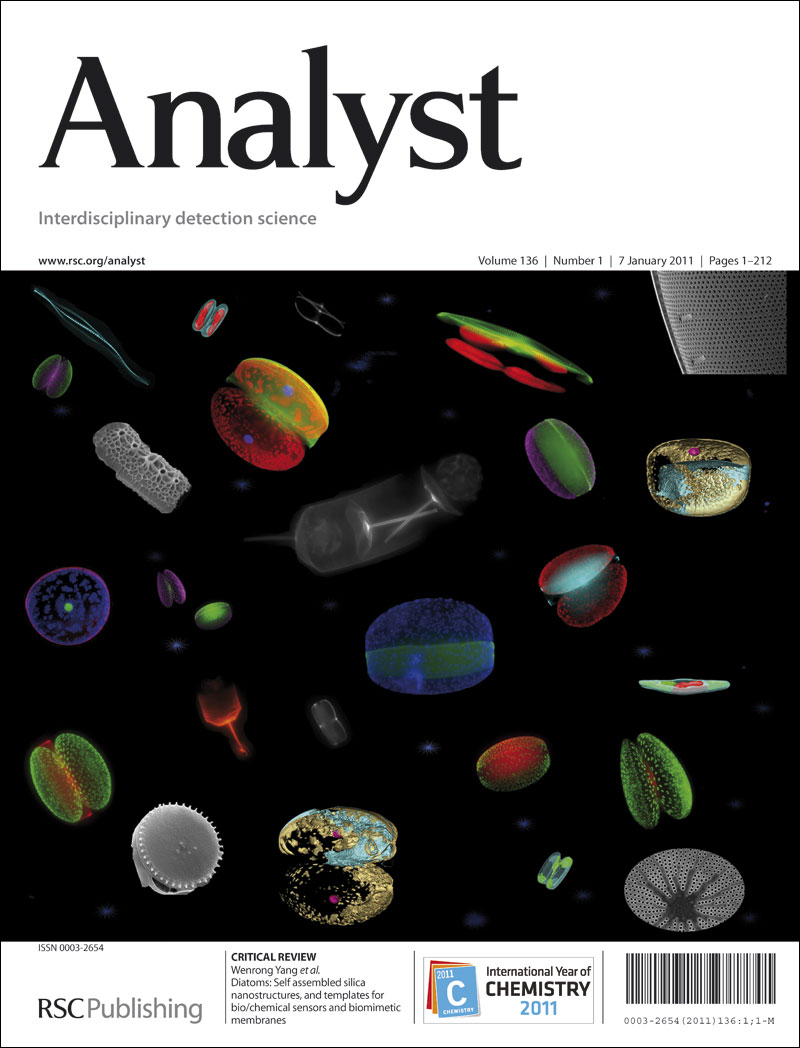用对苯二胺重氮化法修饰二氧化硅表面:高效液相色谱固定相
IF 3.3
3区 化学
Q2 CHEMISTRY, ANALYTICAL
引用次数: 0
摘要
通过对苯二胺(p-PDA)的重氮化,将苯二胺衍生层接枝到表面多孔的二氧化硅颗粒上,绕过了传统的二氧化硅硅烷化反应。利用漫反射红外傅里叶变换光谱(DRIFTS)、x射线光电子能谱(XPS)和元素分析对苯型层进行了表征。XPS显示,它的表层每三个芳基环大约含有一个氮原子。此外,二氧化硅上的层包括芳基和胺官能团的偶氮键,每4到5个苯环有一个胺基。元素分析表明,可以通过调节反应条件来调节芳基的表面覆盖,从而在控制表面负载的同时减少潜在的孔隙阻塞。具有2-4个环/nm2的p- pda衍生层被证明是高效液相色谱(HPLC)的有效固定相,并且在相对恶劣的酸性条件下(80°C下0.5% TFA)表现出优异的水解稳定性。此外,除了小分子外,新相还显示了肽分离的前景。本文章由计算机程序翻译,如有差异,请以英文原文为准。
Silica Surface Modification via Diazotization of p-Phenylenediamine: A Stationary Phase for HPLC
A phenylenediamine-derived layer was grafted onto superficially porous silica particles through the diazotization of p-phenylenediamine (p-PDA), circumventing traditional silica silanization reactions. The phenylene-type layer was characterized using diffuse reflectance infrared Fourier transform spectroscopy (DRIFTS), X-ray photoelectron spectroscopy (XPS), and elemental analysis. XPS revealed a surface layer containing approximately one nitrogen atom for every three aryl rings. In addition, the layer on silica included azo-linkages of aryl groups and amine functionalities, with one amine group per four to five benzene rings. Elemental analysis indicated that surface coverage of the aryl groups could be modulated by adjusting the reaction conditions, thereby enabling control over surface loading while reducing potential pore obstruction. A p-PDA-derived layer having 2-4 rings/nm2 proved effective as a stationary phase for high-performance liquid chromatography (HPLC) and exhibited excellent hydrolytic stability under relatively harsh acidic conditions (0.5% TFA at 80 °C). Furthermore, beyond small molecules, the new phase showed promise for peptide separation.
求助全文
通过发布文献求助,成功后即可免费获取论文全文。
去求助
来源期刊

Analyst
化学-分析化学
CiteScore
7.80
自引率
4.80%
发文量
636
审稿时长
1.9 months
期刊介绍:
"Analyst" journal is the home of premier fundamental discoveries, inventions and applications in the analytical and bioanalytical sciences.
 求助内容:
求助内容: 应助结果提醒方式:
应助结果提醒方式:


